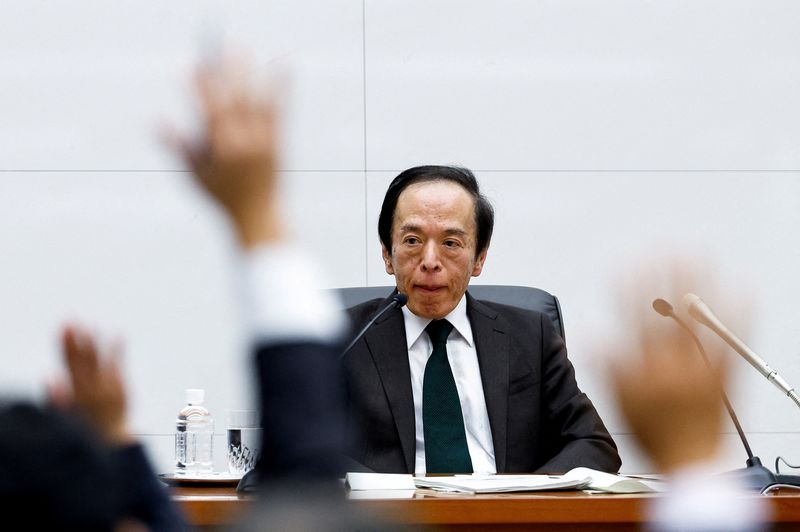In an opening speech to a BOJ-hosted conference in Tokyo on central banking, Ueda said Japan has “made progress in moving away from zero and lifting inflation expectations.”
To achieve 2% inflation in a sustainable and stable manner, the BOJ “will proceed cautiously, as do other central banks with inflation-targeting frameworks,” he said.
“While many of the challenges we face are similar to those encountered by our counterparts, some are uniquely difficult for us,” the BOJ chief added.
Ueda noted that estimating the neutral interest rate accurately is particularly challenging in Japan, given the prolonged period of near-zero short-term interest rates over the past three decades.
“The absence of significant interest rate movements poses a considerable obstacle in assessing the economy’s response to changes in interest rates,” he said.
At the same conference, BOJ Deputy Governor Shinichi Uchida said the end of Japan’s battle against persistent deflation is in sight, but acknowledged that anchoring inflation expectations to the 2% target is “a big challenge.”
Labour market conditions have changed structurally and irreversibly, helping resolve the original causes of deflation such as excess labour supply, Uchida said.
“We returned to a conventional monetary policy framework, aiming at a 2% price stability target through adjustments of the short-term policy rate, which means we have overcome the zero lower bound,” he said.
In a landmark move in March, the BOJ ended eight years of negative interest rates and other remnants of its radical stimulus as it judged that sustained achievement of its 2% inflation target was in sight.

Ueda has said the central bank intends to hike rates to levels considered neutral for the economy, as long as growth and inflation move in line with its projections.
Markets are expecting the BOJ to soon embark on a full-fledged tapering of bond purchases, sending the 10-year Japanese government bond yield to a 12-year high last week. They are also pricing in an interest rate hike to at least 0.20% by the end of the year.
To read the full article, Click Here

